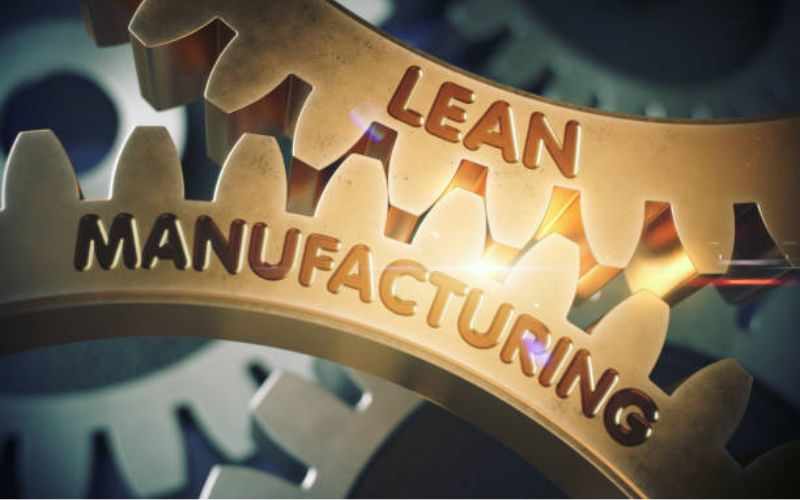
What Is Standardized Work in Lean Manufacturing?
In Lean Manufacturing, standardised work refers to taking notes of steps to complete (tasks) for a job and in the sequence in which those tasks are performed. It essentially is a document that describes which tasks are to be done and in what order. A lean consultant can help a business analyse and find the best practices for performing a task or processes.
Think of “Standardised Work” as a guideline about who does the job, how that job will be done, and when the job will be done.
A standardized process, after documentation, must be shared with the employees/frontline workers. The employees must be taught and trained for them to fully understand and utilise the document to bring out meaningful results.
How is standardized work different from a standard operating procedure (SOP)?
The standardized work is different from a standard operating procedure (SOP) in terms of its nuanced details. An SOP has fewer guidelines that set the standards or conduct of an operating procedure. Standardized work on the other hand, is much more comprehensive and descriptive. It is an end-to-end guide that breaks down how to perform a certain task step-by-step. Having a detailed guideline and a step-by-step instruction on how to do a process leads to consistent quality results.
Standardized Work with Kaizen Methodology
The term “standardized” in the Standardized Work does not refer to static or unchanging practices of a certain task. It includes the current best practices of a job, but that doesn’t mean it’s written in stone. Lean Kaizen (continuous improvement) always focuses on making improvements, however small they may be. The very meaning of Kaizen in the context of business is to look for ways in which one can improve, reduce wastage. and bring the best results.
Three Key Elements of Standardized Work
There are three key elements of Standardized Work. These elements include:
1. Takt time
2. Work sequence
3. In-process inventory
1. Takt Time
The word Takt is derived from a German word called “taktzeit”. It means clock or pulse time. When used in the context of Lean Manufacturing, it means the time taken to complete a product or deliver a service in order to meet a customer’s delivery deadline. Not to be confused with lead time, in which the whole time is recorded from between order placement and fulfilment. Takt time takes account of the time actually used by a team who is actively working on creating goods and services of value for customers. The formula to calculate Takt time is:
Takt Time = Available Production Time Per Day ÷ Customer Demand Per Day
Businesses focusing on achieving optimal productivity always balance Takt time with cycle time.
2. Work Sequence
Work sequence refers to the precise order of steps in which a task is needed to complete within the Takt time. Manufacturing companies should use a standard work chart/document that employees can refer to perform their duties diligently.
3. In-process inventory
Last but not least, in-process inventory refers to the amount of inventory required to complete the production/work in a given period of time. A worker needs an adequate amount of inventory to perform their tasks smoothly. Any excess inventory or little inventory contributes to waste. This goes against the principles of Lean and Kaizen.
Benefits of Standardized Work (Lean Manufacturing)
The benefits of Standardized Work processes are multifarious and provide massive value to businesses across industries. Each business, depending on the type of their work, will experience unique and positive outcomes of implementing standardized work. It is generally seen that when people (workers/employees) are resistant to change or incorporate new and better practices, it is Lean and Kaizen and its components like Standardised Work that helps them embrace that change.
1. Increased Efficiency: Workers, when provided with the standard work chart will be able to perform smooth, consistent and value-driven work. This saves their time, improves the work process, thereby improving overall efficiency of business operations.
2. High-Quality Output: Standardized Work lets every worker follow the same set of detailed guidelines on how to perform a task. This creates uniformity across the board and every worker is able to produce quality and consistent work.
3. Waste Reduction: Leveraging the three key elements of Standardized Work, every worker knows how to complete a certain task and in what time. They are also able to keep a track of how much inventory they should be using. When all of this is performed smoothly, it leads to reduction of waste.
4. Improves Workers Safety: Standardized Work ensures that best practices are followed by every worker. It establishes safety standards and protocols that are needed to be strictly followed. Since the worker already knew how to go about a talk, it reduces worker’s stress and mitigates any burnout.
5. Improves Communication: Through standardised work, companies support employee’s ownership of work. It enables problem solving at every step. Workers themselves take charge of resolving issues and communicate better.
6. Identification of Improvements: When a set standard of work is established, it’s easier to identify areas of small but significant improvements that eventually better the whole process.
These were the benefits of Standardized Work that can improve your business processes. To understand more about Lean and its various components, it’s best to hire an expert Lean consultant who can analyse your business and implement the best Lean practices.





Write a comment ...